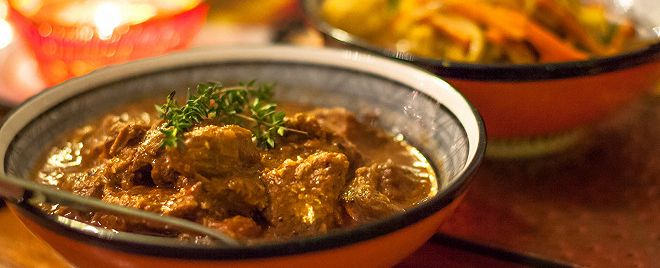

For various reasons, men move from one point of the globe to another. And often, when they leave their homeland, they take with them more intangible goods than physical luggages. Dialogue Migration focused on a “migrant dish” with origins in Guinea that has fully been embedded in the national menus of many countries in the West and Central Africa regions: the “Mboroxé”.
According to research with some specialists in African gastronomy, the dish originated in Guinea and is more precisely a delight of the Fulani community who named it “Mafé Haako (Leaf sauce)”. Even if other countries such as Côte d’Ivoire and Mali claim ownership, the specialists consulted, locate the origins of this dish in Guinea. It is the particularly nomadic trait of the Guinean populations that has certainly propelled this dish in homes in Côte d’Ivoire, Mali, Senegal, The Gambia, Congo, Sierra Leone …
A story of leaves
The “Mafé Xaako (the prefix Xaako refers to leaf)” or “Mboroxé” is made from leaves of manioc. With an annual production of 2.5 million tones in 2020, Guinea is the 14th largest cassava producer on the African continent, according to an FAO ranking published in 2022. But cassava itself has a migratory tradition that goes beyond Guinea, its Fulani community and the sauce that derives from its leaves. From the Euphorbiaceae family, cassava is a plant grown annually in tropical and subtropical regions. It produces a root vegetable from which flour, starch etc. are made. It originated in Brazil (South America) and was imported by Europeans to Africa in the 16th century.
The cassava shrub forms tree tufts of up to 3 to 4 metres tall fed by brown tuberous roots with brown flesh of 50 cm long and 10 cm in diameter. Its alternate and palmate leaves, which interest us here, reach 30 to 40 cm in length and have 5 to 7 lobes. These leaves are the constant of the recipe which has influenced others in the sub-region and other parts of the African continent.
A recipe and its variants according to the conquered countries
Dialogue Migration consulted a specialist in semi-gastronomy. The chef, Ababacar Sadikh Diouf, Mboroxé is commonly called Xaako Bantara in Guinea and it is made from cassava leaves. “For the other components we have oil, onions, fresh and concentrated tomatoes, peanut paste, palm oil, okra, salt and pepper. It can be prepared with fish or meat, at our discretion and accompanied by rice,” he says. Before emphasising that it is important to boil cassava leaves separately and before use to remove starch and acidity.
Mr. Diouf also indicates that in Congo, Xaako Bantara is transformed into Xaako Puuté (sauce made from sweet potato leaves), also called Saka-Saka. It should be noted that, among the eating habits in this Central African country, the sweet potato is one of the main staple foods in many of its regions. “In the end, Mboroxé and Saka-Saka are a bit the same thing, the name changes depending on the leaves used. Mboroxé is cooked from cassava leaves. As for Saka-Saka, it is prepared with sweet potato leaves. Note that in Congo they do the same thing only they call it leaf sauce,” he mentions.
In Sierra Leone, sweet potato leaf sauce is also popular. While in Côte d’Ivoire, cassava leaves are chosen. In Mali, The Gambia, Côte d’Ivoire and Senegal, people have adopted both versions of “Mboroxé”. Whether it’s cassava leaf sauce or sweet potato leaf sauce. It should also be noted that in these different countries, the dish is prepared with meat or fish, depending on the availability of one or the other element.
The therapeutic virtues of “Mboroxé”
The components with which “Mboroxé” is prepared contain therapeutic virtues. Cassava leaves are recommended in the treatment of non-severe malaria, fever, in wound disinfection, burns, treatment of conjunctivitis and anaemia.
Peanut paste increases the human ability to resist hunger. It contains protein and dietary fibre, in addition to containing fat and several vitamins and minerals. Apart from zin, seafood is also composed of magnesium good for fat and stress. They also contain energising phosphorus, potassium essential for proper heart function, calcium useful for bones, iron anti-anemia and antioxidant selenium.



